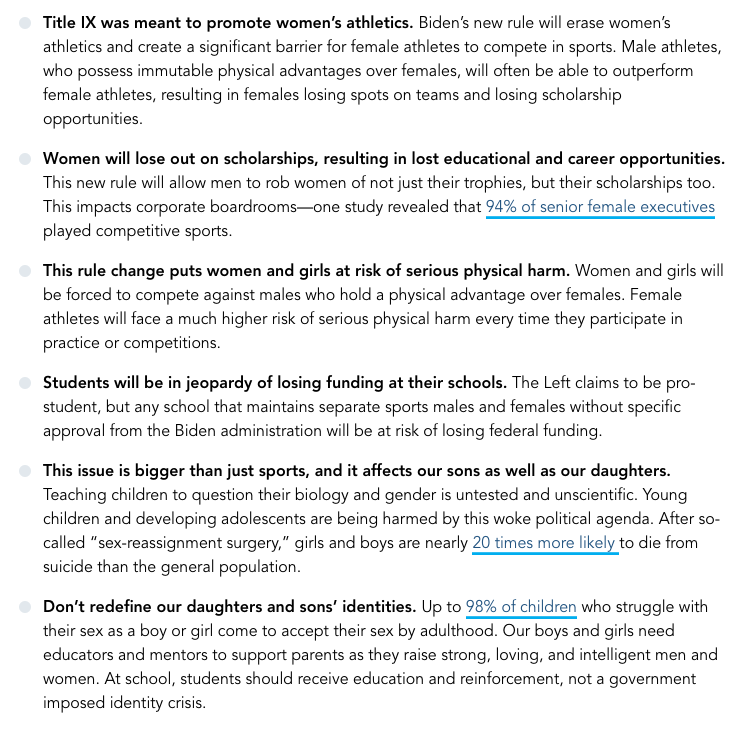Have you ever wondered why bigots all seem to recite the same talking points and use the same words? It’s because they’re working to scripts, either literally – many Christian Right groups offer step-by-step guides for you to print out that teach you how to sign up for Twitter, how to post a message and what specific words and phrases to use; some even provide the full tweets, indicating which bit you should personalise – or because they’ve memorised them.
Here are some examples of the anti-trans talking points set out by Heritage Action in the US as it fought against changes to the Title IX legislation. The goal is to demonise trans people in sports, almost all of them in non-elite, school-level sports, one of the key campaigning issues set out by the evangelical right in 2017. I’m going to use a screenshot so you can see how it’s set out.

Isn’t it funny how closely so many newspaper columns follow that template, and how many supposedly objective news items recycle the talking points?
The links are to bullshit, of course, and the one about suicide is particularly repellent: it’s a deliberate distortion of a 2011 Swedish study that found that before 1989, trans people in that country had shitty healthcare that fucked with their mental health (post-89, as healthcare and support improved, there was no increase in suicidality); the study’s author has explicitly condemned the many misrepresentations of their work.
Bigots lie, here’s Dave with the weather. I know. But look at the language. The whole document is about transgender kids, but the word “transgender” is only used twice in the entire thing (the image is just an excerpt). Instead, trans kids are called “male athletes”, “men” and “males”. The intent is to stop you seeing trans kids as the girls and boys they are.
There’s another linguistic trick beloved by bigots and frequently parroted uncritically in media, and that’s to replace “people” with “-ism” or “-ology”. So people will say with a straight face that of course, they support trans people; they’re just against gender ideology. Or of course they don’t want to eliminate trans people; they just want to eliminate “transgenderism”.
Except the only way you can eliminate “transgenderism” is to eliminate trans people.
There’s a more polite version doing the media rounds today, on the anniversary of Section 28’s introduction: a call to “remove pronouns” from schools. But pronouns here is a proxy for trans and non-conforming children; what “removing pronouns from schools” means is bullying trans and gender non-conforming children to try and stop them being trans. I’ve seen many people go for the easy dunk, pointing out the pronouns used by the person who wants to remove pronouns, but that’s falling into the trap: you’re accepting the framing, that the proposal is about stopping an abstract linguistic thing rather than harming actual children. Because harming actual children is the goal.
Once you see it, you see it everywhere. The escalation from “trans debate” to “trans issue”, “trans problem” and most recently, “trans crisis”; LGBT+ equality being described as a “virus”; the repeated use of “misgendering” in headlines about people who lost their jobs for despicable bullying campaigns or for gross misconduct; Again and again weasel words are used to conceal blatant bigotry, a bigotry that knows it can hide in plain sight behind euphemisms that will be repeated again and again but never challenged.
I’m very scared by this. When you call a marginalised group a “crisis” or a “virus”, when you openly call for the “elimination” of transgenderism, you are following a path we’ve seen countless times before all over the world. Defining marginalised groups as a “problem” inevitably invites a “solution”.
